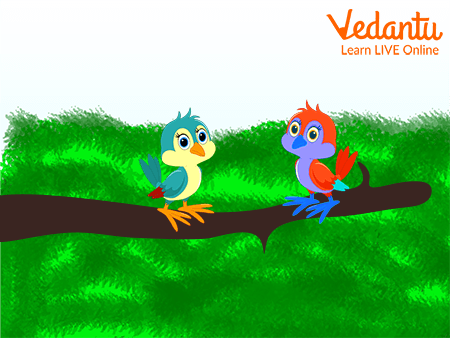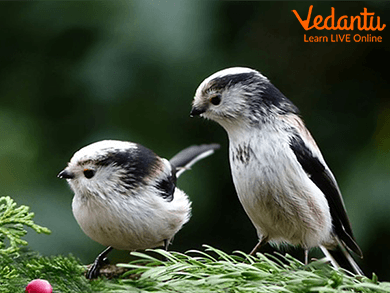Introduction to Two Little Dickie Rhyme
A classic children's fingerplay and nursery rhyme from the 18th century is "Two Little Dickie Birds." In 1765, the collection "Mother Goose's Melody" was first printed in London. Regarding the song's precise genesis, there is no documentation. The lyrics have been somewhat altered in the song's current version, which dates back to the 19th century, and the names of the birds have been changed from Jack and Jill to Paul and Peter.
Two Little Dickie Birds Lyrics
The two birds' lyrics are given below. Read them aloud and the parents should enact the poem to make it fun for the little kids.

Two Birds Sitting On A Wall
Two little dickie birds, Sitting on a wall;
One named Peter,
One named Paul.
Fly away, Peter!
Fly away, Paul!
Come Back, Peter!
Come Back, Paul!
The lyrics of the original version of the poem are given below. Take a look at them and read them aloud to your kids.

Two Dickie Birds
Two little blackbirds
Sitting on a hill.
One named Jack,
And the other is named Jill.
Fly away, Jack.
Fly away, Jill.
Come back, Jack.
Come back, Jill.
Two Little Dickie Birds Rhyme Summary
Two birds are pictured resting on a wall in the lyrics to "The Two Birds." The poet wants the birds to return once they take off again. Thus, the poet is requesting that the birds return. The youngster can learn new enactment through this poem, as well as the opposite words.

Dickie Birds
Antonyms
A poem is a wonderful tool for teaching kids new antonyms. Words that entirely contrast one another in meaning are said to be antonyms. Both general phrases and comparisons can be made using these words.
Below are a few of the antonyms that you can incorporate into the poem to help the children learn them.
High - Low
Early - Late
Fast - Slow
Girl - Boy
Happy - Sad
Pretty - Ugly
Rich - Poor
Sun - Moon
Son - Daughter
For example, instead of naming birds Peter and Paul, you can use late and early.
Two little dickie birds, Sitting on a wall;
One named Late,
One named Early.
Fly away, Late!
Fly away, Early!
Come Back, Late!
Come Back, Early!
How to Enact?
Image Two Little Dickie Birds Rhyme is being played by an adult who is pointing both of their index fingers towards the child so they can clearly see it. Peter gets one hand, while Paul gets the other. Both hands are visible to the youngster as they alternately play with the index finger at the line, "Two little dickie birds, sitting on a wall." To draw attention, only one finger will move at the next two lines: first, Peter's hand, then Paul's hand.
Your hands will move sequentially to the following words, "Fly away Peter!" and "Fly away Paul!" before returning with the next phrase, "Come back Peter!" and "Come back Paul!" once more sequentially.
Conclusion
The Two Little Dickie Birds poem can be used as enactment and is a fantastic approach to educating kids' about antonyms. To make the poetry more engaging for the kids, perform it for them. Two birds with names that are opposite each other are described in the poem as flying away before returning to their original location.


FAQs on Two Little Dickie Birds
1. How many dickie birds are there in the poem?
There are two dickie birds who have Peter and Paul as their names.
2. What are dickie birds?
Dickie birds are referred to as birds that have small sizes. They have feathers that are usually brown, black, yellow and white in colour.
3. What are synonyms?
Synonyms are words that have the same meaning. For example: shut and close, both the words have the same meaning.





